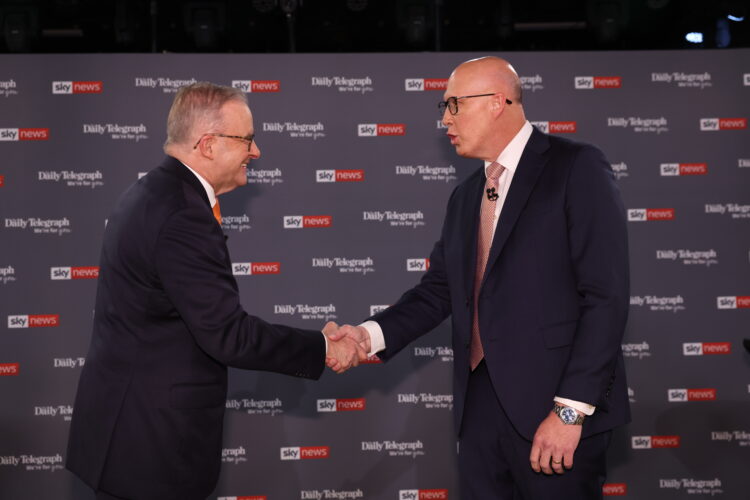Good night – see you tomorrow? (After we all scrub our eyes and ears of that debate)
For reasons not immediately clear to anyone except maybe contract conditions, Sky Political Editor Andrew Clennell is now asking a question.
There is a very big run up to this about deficits etc:
Your budget contains $179 billion worth of deficits over five years. Over that period, the extra cost of the cost of the NDIS will be another 33 billion. The cost of your five to $10 tax cuts will be 17 billion over four years. Your public service wages bill after you hired another 46,000 public servants will be 8 billion a year. That’s 40 billion over the five years. That’s 90 billion I’ve just spelled out of the 179 billion of deficits, and that’s before we get to other campaign promises.
You also have us heading to a trillion dollars of debt, in fact, $1.2 trillion of debt having had a go at the Coalition for the same thing. Jim Chalmers, isn’t this the opposite of your hero, Paul Keating, so called beautiful set of numbers. Given these numbers, are you prepared to rule out cuts if you are re elected and haven’t you left Australia in a weak position in terms of a fiscal buffer for a global economic crisis? Jim Chalmers, why have you left us with a decade of deficits?
Chalmers:
Well despite all of that investment in strengthening Medicare, providing tax cuts, providing energy supplements, delivering the NACC, making our economy more resilient.
The budget is $207 billion stronger than when we came to office, and that’s made room for those investments, and it’s meant that we delivered two surpluses our predecessors delivered none.
The deficit this year is half as big. We’ve made a structural difference to the budget in areas like the NDIS and aged care and also interest costs. And so we are getting the budget in much better nick, and we’re doing that without ignoring our responsibilities to people who are doing it tough.



